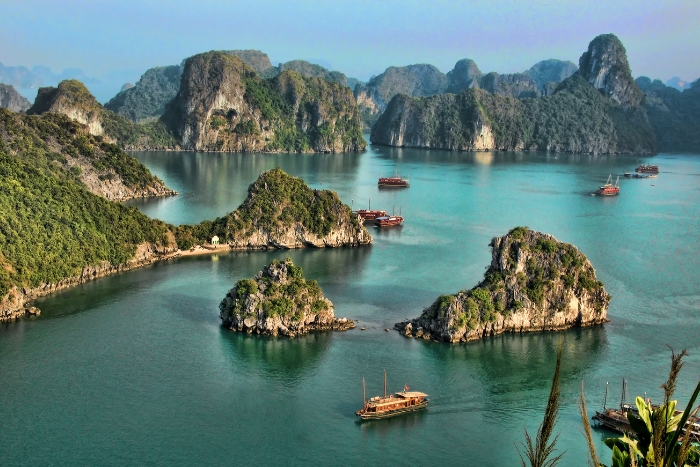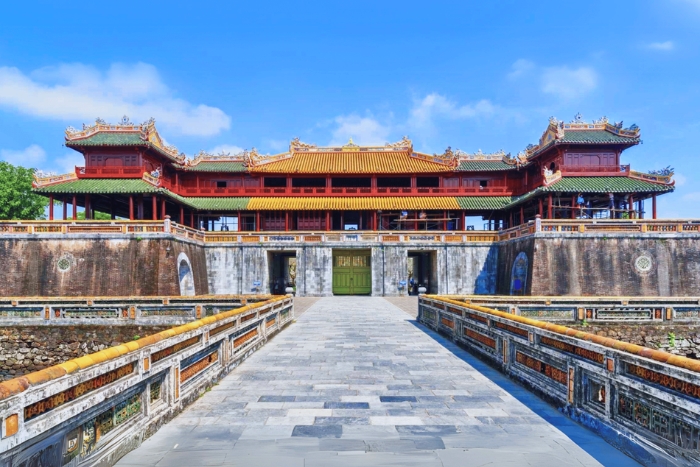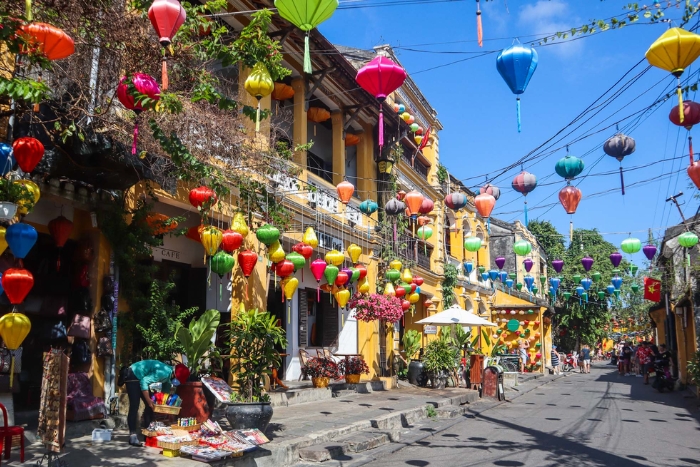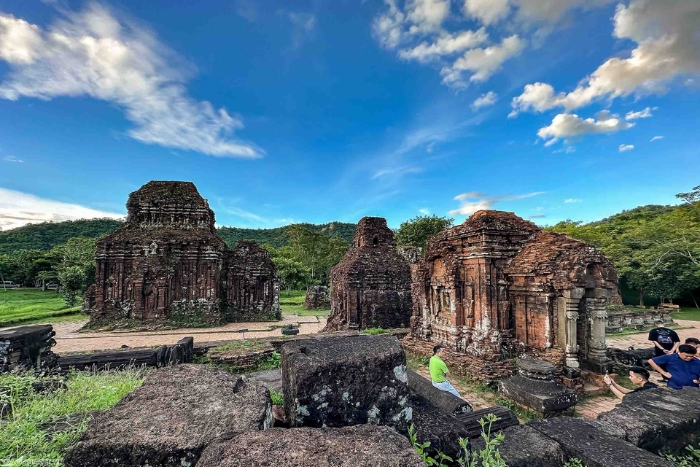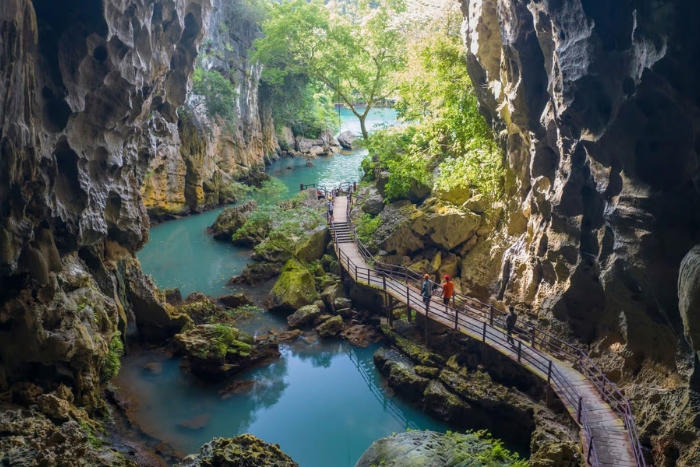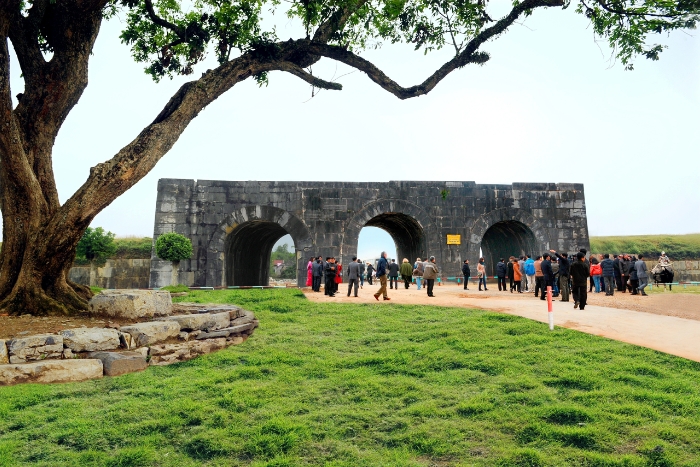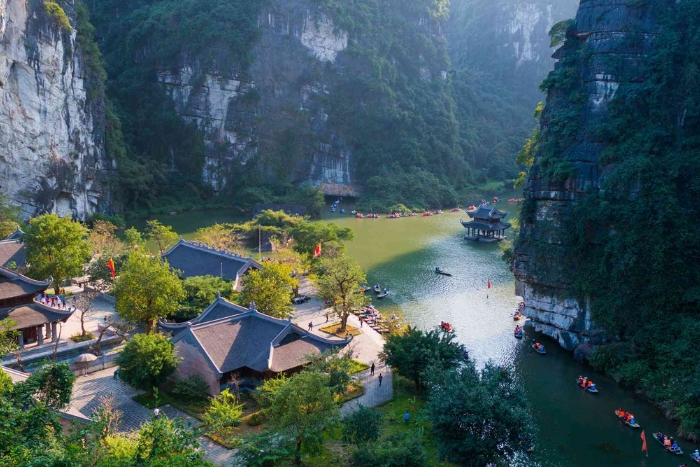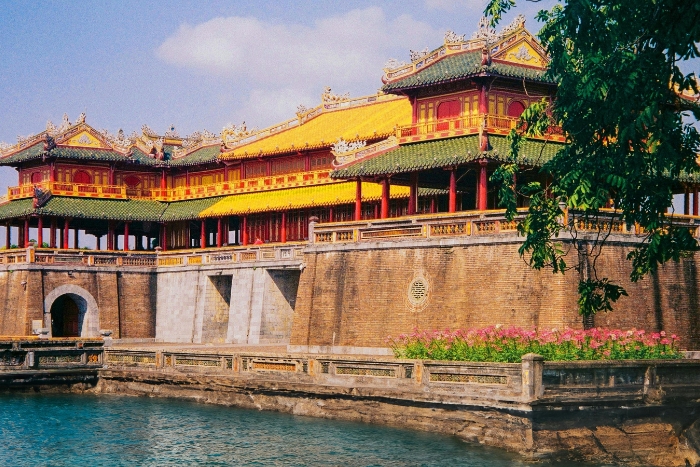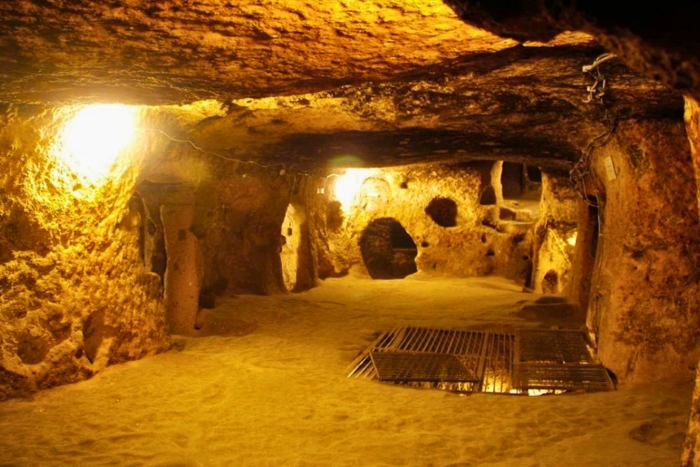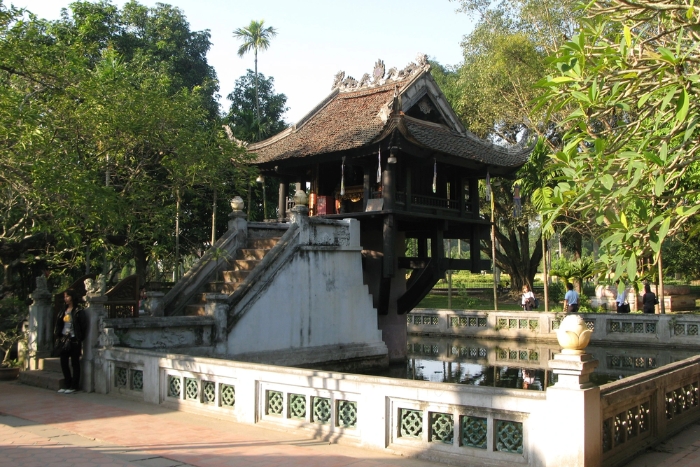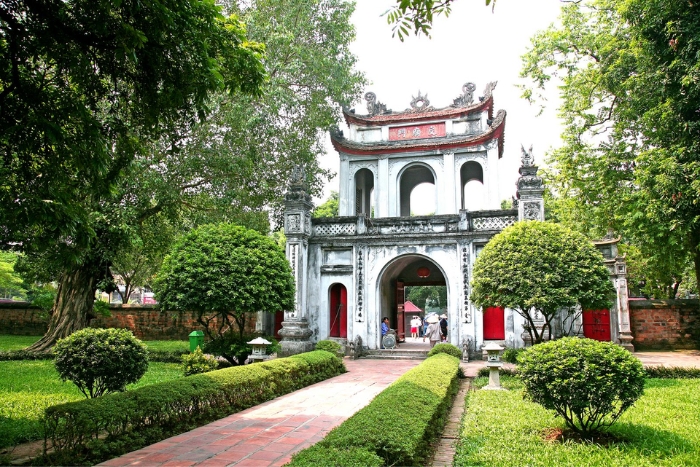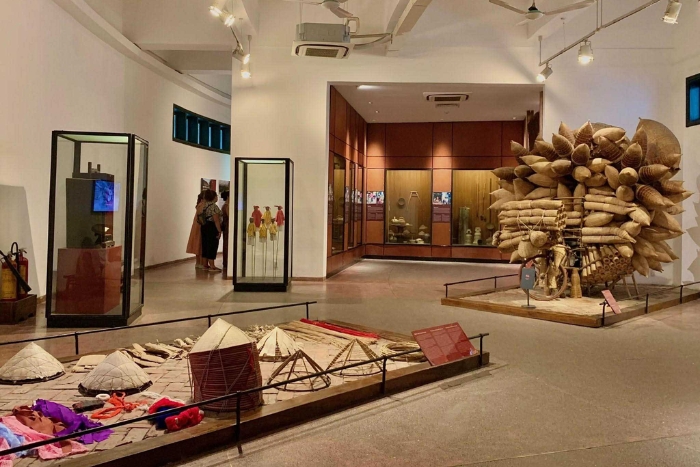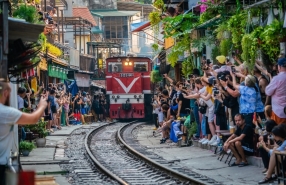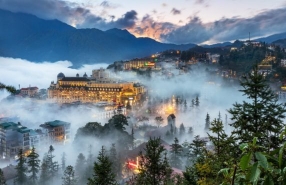
Vietnam attracts travelers with its rich cultural diversity, breathtaking landscapes, and deep historical roots. Among the most impressive attractions are the UNESCO sites in Vietnam, recognized for their outstanding universal value. From the limestone formations of Ha Long Bay to the imperial remains in Hue and the charming ancient town of Hoi An, the best UNESCO sites in Vietnam offer a window into the country’s fascinating past and natural beauty. These Vietnam UNESCO World Heritage sites are perfect for anyone interested in history, architecture, spirituality, or unique landscapes. In addition to these well-known landmarks, Vietnam is also home to many historical sites in Vietnam that are not listed as UNESCO but are equally meaningful. This guide introduces both Vietnam heritage sites UNESCO and other cultural treasures for a journey full of emotion and discovery.
What Are The Best UNESCO Sites To Visit In Vietnam?
I. Are there UNESCO World Heritage sites in Vietnam?
Vietnam is home to eight outstanding locations that are recognized as UNESCO World Heritage Sites. From the Red River Delta to the Central Highlands, these sites of Vietnamese cultural heritage cover a broad area. Ancient citadels, amazing karst scenery, dynasty-era ruins, and sacred Hindu temples are among these UNESCO World Heritage Sites in Vietnam. This difference not only gives international recognition but also opens the way for interesting experiences. Often when you least expect it, these encounters are amazing and unforgettable.
1. Ha Long Bay – A globally renowned natural gem
Talking about
UNESCO sites in Vietnam calls for not mentioning
Ha Long Bay. Emergent from the water, the rugged limestone formations seem practically phantasmic. Even if you have viewed hundreds of images of it, seeing it live affects differently.
By cruise is the finest way to discover. Although they are all touristy experiences, riding a normal junk, sleeping on the water, and rejoicing in the quiet of daybreak are nonetheless beautiful. The bay is very attractive and captivating. Among the most well-known UNESCO World Heritage sites in Vietnam.
2. The Hue Monument Complex – Central cultural treasure
The former imperial capital, Hue, does not at once show itself. Behind its stone walls and serene gardens hides the narrative of the Nguyen dynasty. Buddhist temples, imperial graves, and the Forbidden Citadel skillfully combine degradation and renovation.
Hue's openair museum is not one of stasis. Though with a melancholy and maybe somber undertone, it projects a silent elegance. Unfiltered, its past glory still resounds in streets. Among the UNESCO World Heritage Sites of Vietnam, it is a very important element.
3. Hoi An Ancient Town – Architectural and cultural harmony
In
Hoi An, the old architecture integrates with modern life in nearly perfect harmony. As a former port town, it has maintained its cobbled streets, timber cottages, and vibrant lanterns. The atmosphere is tranquil and eternal.
Every façade has a story to tell, with Japanese, Chinese, and French influences intertwined. However, beneath postcard beauty exists a genuine local life and active craftsmanship. Tailors, calligraphers, leatherworkers, and lantern makers preserve the tradition. Hoi An is an excellent illustration of Vietnam's UNESCO cultural heritage locations.
4. The Mỹ Sơn Sanctuary – Champa heritage
Though less well-known than the temples of Angkor, Mỹ Sơn also demands attention. Located in a lush valley, these red brick towers evoke a moment when Champa embraced Indian Hinduism.
Though the towers are broken, they still generate energy. The atmosphere is odd, as though stillness talks. An extremely expressive yet small site. Included among UNESCO World Heritage Sites in Vietnam, this location is a key element of Vietnam's UNESCO legacy sites.
5. Phong Nha-Kẻ Bàng National Park – Kingdom of caves
Created in 2003 and expanded in 2015, this park offers a different aspect of Vietnam. No palaces or temples; just big caverns, unusual geology, and abundant biodiversity.
One among its riches is Son Doong Cave, the biggest cave on the planet. Though expensive and hard-to-access, easier caves such Phong Nha and Paradise Cave give an intriguing underground experience. The encounter is captivating and occasionally thrilling. Among Vietnam's UNESCO World Heritage locations, another gem.
6. Thang Long Imperial Citadel in Hanoi – A thousand years of history
Amid the hustle and bustle of Hanoi, this important historical site is easily overlooked: the
ancient royal citadel of Thang Long. Its stones hold stories from a time when Chinese control lasted until the early twentieth century.
Archaeological excavations uncovered artifacts and ancient foundations, shedding light on Hanoi's beginnings. At first look, it may appear calm, but it is critical to comprehend the city’s history. This citadel is one of the top UNESCO sites in Vietnam, adding to the country's list of UNESCO World Heritage Sites.
7. The Hồ Dynasty Citadel – Overlooked heritage
Near Thanh Hóa, the Hồ Citadel towers out in its stark stone might. Its austere military architecture, built in the 14th century, is interesting, but it is often ignored by tourists.
It discloses itself slowly, away from typical routes. Perhaps fewer dramatic in visuals, but more genuine in authenticity. It reveals a neglected chapter of Vietnam's history. A priceless example of UNESCO sites in Vietnam, albeit less well-known.
8. Tràng An Scenic Landscape Complex – Natural and spiritual beauty
Finally, Tràng An offers a distinctive combination of nature and culture. Limestone peaks, tranquil rivers, enigmatic caves, and rock-carved temples.
You'll travel by boat, guided by local oarswomen, exploring a scenery that feels almost supernatural. Tràng An is captivated by its beauty and spiritual ambiance. It's a place for reflection, capping a tour through Vietnam's historical sites and UNESCO World Heritage sites.
II. Which major historical sites in Vietnam are most worthy of visiting?
In addition to well-known UNESCO World Heritage Sites in Vietnam, the nation abounds in equally significant historical monuments. Every era left behind tales and monuments from imperial dynasties, the Vietnam War, or French colonial times. Going to these Vietnamese historical sites lets you relate more deeply with the country's spirit. Below are some of the most significant places to visit, not all of them, but a reasonably comprehensive list!
1. Hue's Imperial City
Good cause abounds for this to be possibly one of the most famous sites in the country. The
Imperial City of Hue, which was founded in Central Vietnam, served as the Nguyen kings' capital up until 1945. It was included on the list of
Vietnamese UNESCO World Heritage Sites in 1993. It is enormous, with palaces, temples, tall stone walls, and majestic gates.
Most visitors enter via the Noon Gate, then stroll through the Supreme Harmony Palace, appreciate the Nine Dynastic Urns, and perhaps visit the burials of monarchs such as Minh Mang or Khai Dinh. You might spend hours of discovery or a few calm moments absorbing the ambiance. In addition to being one of the top UNESCO places in Vietnam, this is also a significant historical monument.
2. The Cu Chi Tunnels (Ho Chi Minh City).
This one deviates somewhat. History developed underground. Built during the battle against the Americans, the Cu Chi Tunnels cover more than 200 kilometers. Their use as hiding places, supply lines, command centers, even residences was widespread.
Visitors today may access a portion. You can go inside (though it's a tight squeeze), see clever traps from the war, and try to picture what life was like down there in the dark, with fear as a daily friend. Though not on the UNESCO World Heritage Sites list, it is surely among the most significant historical locations in Vietnam. This is the kind of location that gives a trip outside the well-known UNESCO sites in Vietnam some depth.
3. Hoa Lo Prison (Ha Noi)
Not exactly a “fun” site to visit, and yet… Originally constructed by the French to confine Vietnamese insurgents,
Hoa Lo Prison, nicknamed the "Hanoi Hilton" by captured American pilots, is situated in the center of Hanoi.
Two stories which are the colonial oppression and the American POW experience are told here, in a museum setting. The little cells, chains, and ancient artifacts produce a memorable memory. Although not showy, it is memorable. That is also the reason it counts. Though not one of Vietnam's UNESCO sites, it is one of those historical sites that offers actual significance to your knowledge of the nation's past.
4. The Ho Chi Minh Mausoleum in Hanoi
Here's a really unique attitude. The preserved body of "Uncle Ho" is in Ba Dinh Square, where independence was proclaimed in 1945. Solemn and still is the
Ho Chi Minh Mausoleum. The atmosphere is a mix of respect, silence, maybe even curiosity.
Guests stroll slowly, look at the glass coffin, and leave in silent contemplation. For the Vietnamese, Ho Chi Minh is a big figure. Though not officially recognized as part of the Vietnam UNESCO heritage sites, this location is very significant for the national identity. Another must-see among Vietnam's historical sites helps to clarify the modern path of the country.
5. Hanoi's One Pillar Pagoda and Temple of Literature
Still in Hanoi, but with a somewhat more scholarly and spiritual attitude. Resembling a lotus emerging from water, the
One Pillar Pagoda shows incredibly strong emotionally. Constructed in the 11th century, this represents Vietnamese Buddhism.
Dedicated to Confucius and house to Vietnam's first university, the
Temple of Literature is nearby. You will find calm courtyards, magnificent curved roofs, and stone steles. Though not designated as such on the
UNESCO World Heritage Sites in Vietnam, these two sites define the heart of the nation. Certainly, these should appear on any list of
Vietnamese historic sites.
6. Hanoi's Vietnam Museum of Ethnology
This museum is distinct. It portrays the tales of Vietnam's 54 ethnic groups rather than one. Inside are musical instruments, everyday items, clothing... Outside are realsize traditional homes.
Although it may not be a Vietnam cultural monument in the normal meaning, it offers you a larger perspective on what legacy actually is. After all, Vietnam UNESCO World Heritage Sites live in language, customs, and craft in addition to their stone. This museum is a must-visit if you want to see the complete cultural panorama.
7. Reunification Palace (Ho Chi Minh City)
Let's conclude with a powerful symbol:
Reunification Palace. This is the spot where the Vietnam War came to a close on April 30, 1975, when a tank burst through the gates. That tank is still there, by the way.
Inside, you will pass presidential offices, reception halls, and even underground shelters. It feels frozen in the 1970s. Though not a palace in the true royal sense, it is a nexus of power, judgment, and history, sometimes sad. Although not an UNESCO site in Vietnam, it merits its place among the main historical sites in Vietnam.
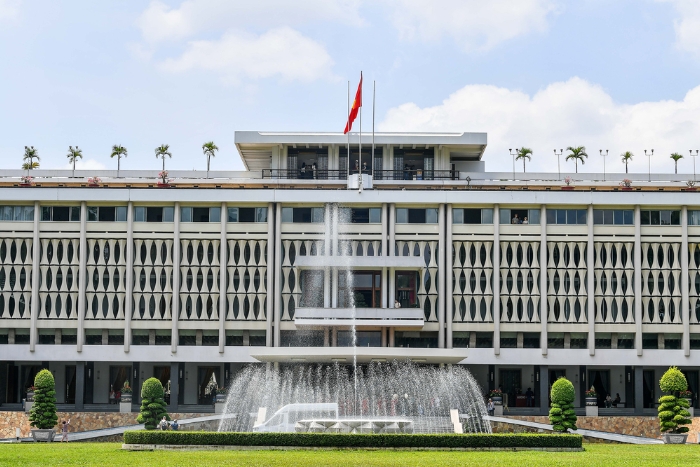
Vietnam is so much more than UNESCO World Heritage Sites in Vietnam. Beyond the famous landmarks, you’ll find countless historical sites in Vietnam that offer deep insight into the country’s past. From imperial citadels to colonial-era prisons, and from quiet temples to underground tunnels, each place holds a unique memory. Visiting these historical sites in Vietnam means connecting emotionally with stories of empire, conflict, and reunification. These places may not all be on the official list of UNESCO World Heritage Sites in Vietnam, but they are just as powerful. They complement the well-known Vietnam heritage sites UNESCO and give travelers a broader, more authentic experience. Take your time. Explore with curiosity. Because in Vietnam, every step is not only a journey across space, but also through time.
Why should I visit Vietnam UNESCO World Heritage Sites?
Visiting Vietnam UNESCO World Heritage Sites offers a unique chance to experience the country’s history, architecture, and natural wonders. Each of the Vietnam heritage sites UNESCO tells a different story, making your trip more meaningful and memorable.
Which Vietnam cultural heritage sites are best for first-time travelers?
For first-time travelers, we recommend exploring Vietnam cultural heritage sites like the Temple of Literature in Hanoi, the One Pillar Pagoda, and the ancient town of Hoi An. These sites reflect both the intellectual and spiritual traditions of Vietnam.
Are there any historical sites in Vietnam that are not UNESCO-listed?
Yes, in addition to UNESCO World Heritage Sites in Vietnam, there are many important historical sites in Vietnam like the Cu Chi Tunnels, Hoa Lo Prison, and the Ho Chi Minh Mausoleum. These places offer deep insights into the country’s modern history.

